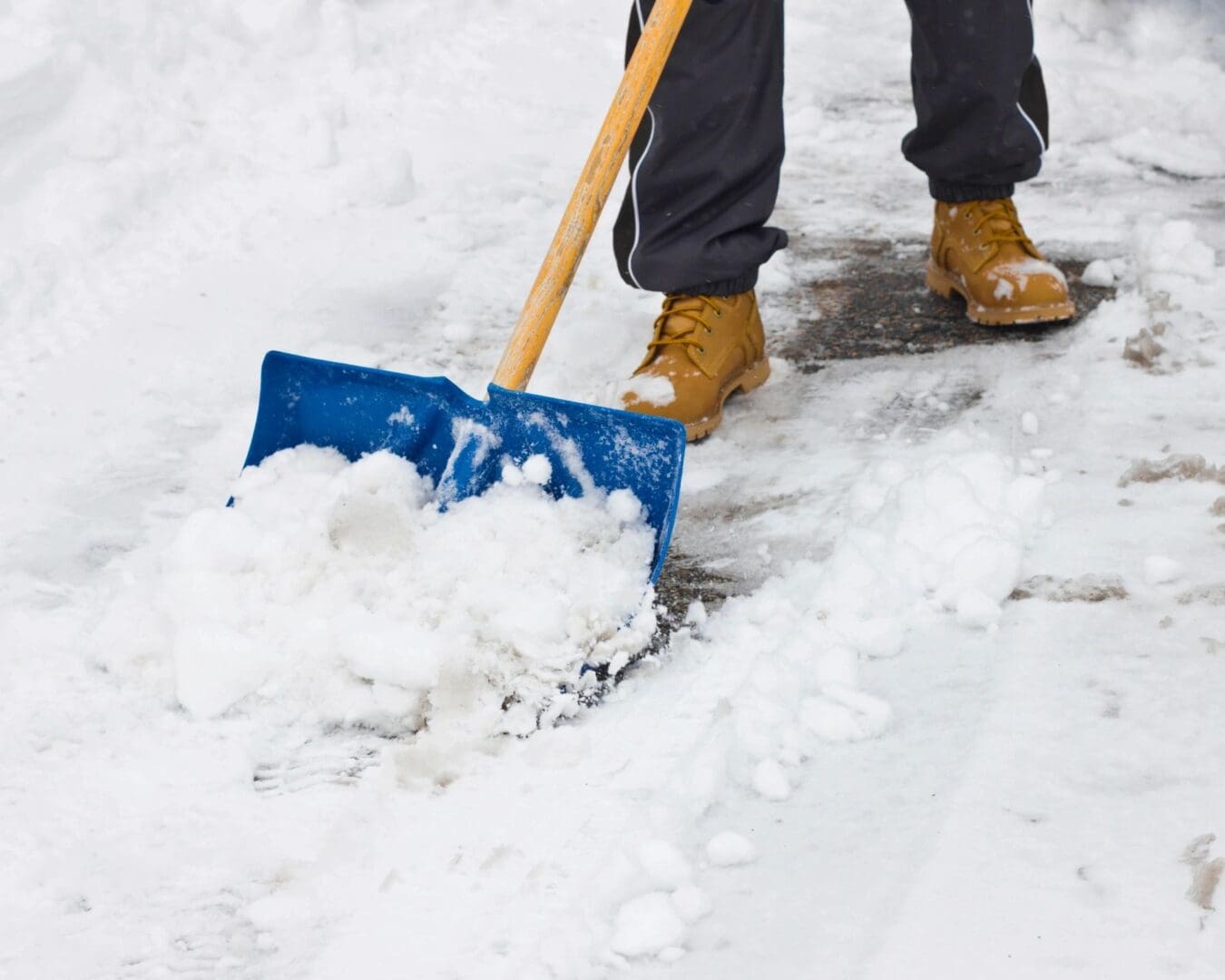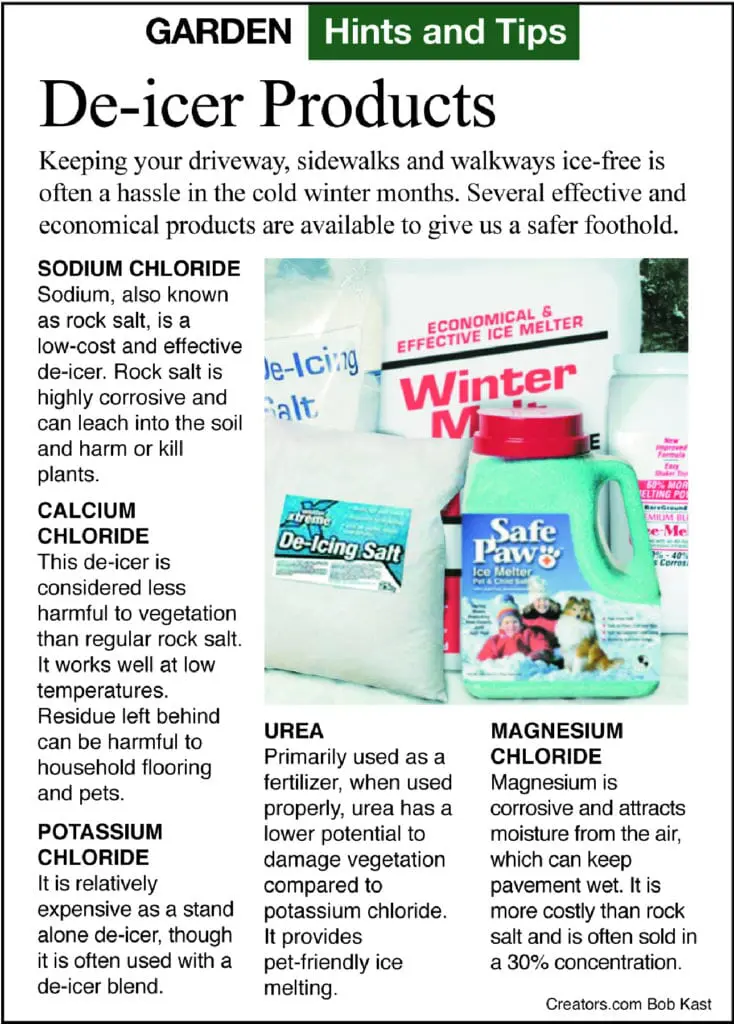Search Posts
Recent Posts
- Providence Delivers Summer Fun: Food, Water Play & Activities June 20, 2025
- Rhode Island Weather for June 20, 2025 – Jack Donnelly June 20, 2025
- Outdoors in RI: Time to Seastreak – Vets Access – Invasive Alerts – Clays 4 Charity at The Preserve – 2A TODAY June 20, 2025
- GriefSPEAK: Kill Switch – Mari Nardolillo Dias June 20, 2025
- Dr. Rosemary Costigan Named President of Community College of Rhode Island June 19, 2025
Categories
Subscribe!
Thanks for subscribing! Please check your email for further instructions.

A Greener View: Ice-Melting Products for the Landscape – Jeff Rugg
by Jeff Rugg, contributing writer
Q: It looks like winter is coming soon, and I need to get some ice-melting granules. My area gets a few ice storms each winter. We get a little snow too, but that usually melts off quickly. My concern is getting rid of the ice. I was told that I could use lawn fertilizer to melt the ice and it would then fertilize the grass nest to the sidewalk when the weather warms up. What do you think?
A: It is that time of year again. Some snowstorms have ice storms along their southern edge. It is amazing how snow predictions can turn to ice. Only a few areas of our country are immune to them. The southern edge of the snowbelt can get freezing rain several times a year, while the Gulf Coast gets them once every few years. But, in the northeast we need to be prepared. Even now, morning lows in the low to mid 30s can result in a need to put something down, especially if we’re heading out in the early morning.
Every winter, many people do a lot of damage to their landscape by misusing the salt that is applied for ice and snow removal. A variety of products are available, and they all help keep the last little bit of ice and snow off the walks and drives, but none are supposed to be used instead of shoveling snow.
The salts used for most ice-melting products are made from calcium chloride or sodium chloride, both of which will kill plants. The sodium in sodium chloride can also damage the soil itself so that plant roots cannot grow in it.
The chemical components of fertilizers are mostly made from a variety of salts. Fertilizers are designed to supply plants with specific nutrients at specific times in their growth cycle. Winter is not one of those times, so using fertilizers to melt ice won’t help the plants at this time. If a lot of fertilizer is used, it will be just as harmful to plant roots as other salts in the soil when spring arrives. Some portions of the fertilizer will wash into the storm sewers and fertilize the streams and retention ponds, creating algae blooms and other problems.
As in many other cases in gardening, it is best to use the products as they are intended to be used, and so you should follow label directions. If the fertilizer bag says it can be used as an ice-melter, then go ahead and use it the way it says on the package. Otherwise, don’t.

There are ice-melting products that use potassium salts or magnesium salts. Potassium is a major nutrient used in many fertilizers. It is not necessarily needed in many soils, but it does not harm the soil and can counteract some of the effects of other ice melting salts. Magnesium chloride is safer, less corrosive and more expensive than calcium chloride.
Urea is a fertilizer ingredient that is sometimes used in organic or green or pet-friendly ice-melting products. It is safe, but it does have the potential to pollute waterways.
Calcium magnesium acetate and potassium acetate are less corrosive than salts, especially on vehicles; however, they can persist to become a problem in waterways and are very expensive. How do you measure expensive? The product may cost more, even a lot more, but if bridges and trucks don’t rust, maybe it is cost-effective after all.
There are some liquid ice-melters that use ethylene glycol, which is used in antifreeze for your car and to keep airplane wings free of ice. Do not use it around plants or if you have pets. Dogs find the sweet taste a treat, but ethylene glycol is poisonous. It is applied with a sprayer, but the mist can be harmful to humans as well.
You could also try using sand or kitty litter to gain traction without melting the ice. I have found that kitty litter turns into a mushy mud that tracks into the house, so I prefer to use a bit of sand. I can sweep up the sand and reuse it. You can mix sand with an ice-melter so that you use less of the chemical product.
___
To read more columns on gardening by Jeff, go to: https://rinewstoday.com/?s=jeff+rugg

Email questions to Jeff Rugg at info@greenerview.com. To find out more about Jeff Rugg and read features by other Creators Syndicate writers and cartoonists, visit the Creators Syndicate website at www.creators.com. COPYRIGHT 2024 JEFF RUGG DISTRIBUTED BY CREATORS.COM

Excellent advice. Thank you